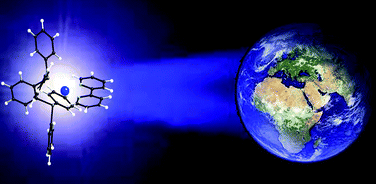Copper(i) complexes for sustainable light-emitting electrochemical cells†
Abstract
Four prototype heteroleptic copper(I) complexes [Cu(bpy)(pop)][PF6] (

* Corresponding authors
a
Instituto de Ciencia Molecular, Universidad de Valencia, Catedrático José Beltrán 2, Paterna, Spain
E-mail:
henk.bolink@uv.es
b Fundació General de la Universitat de Valencia (FGUV), PO Box 22085, Valencia, Spain
c
Department of Chemistry, University of Basel, Spitalstrassse 51, Basel, Switzerland
E-mail:
catherine.housecroft@unibas.ch, edwin.constable@unibas.ch
Fax: +41 61 267 1018
Tel: +41 61 267 1008
Four prototype heteroleptic copper(I) complexes [Cu(bpy)(pop)][PF6] (

 Please wait while we load your content...
Something went wrong. Try again?
Please wait while we load your content...
Something went wrong. Try again?
R. D. Costa, D. Tordera, E. Ortí, H. J. Bolink, J. Schönle, S. Graber, C. E. Housecroft, E. C. Constable and J. A. Zampese, J. Mater. Chem., 2011, 21, 16108 DOI: 10.1039/C1JM12607E
To request permission to reproduce material from this article, please go to the Copyright Clearance Center request page.
If you are an author contributing to an RSC publication, you do not need to request permission provided correct acknowledgement is given.
If you are the author of this article, you do not need to request permission to reproduce figures and diagrams provided correct acknowledgement is given. If you want to reproduce the whole article in a third-party publication (excluding your thesis/dissertation for which permission is not required) please go to the Copyright Clearance Center request page.
Read more about how to correctly acknowledge RSC content.
 Fetching data from CrossRef.
Fetching data from CrossRef.
This may take some time to load.
Loading related content
